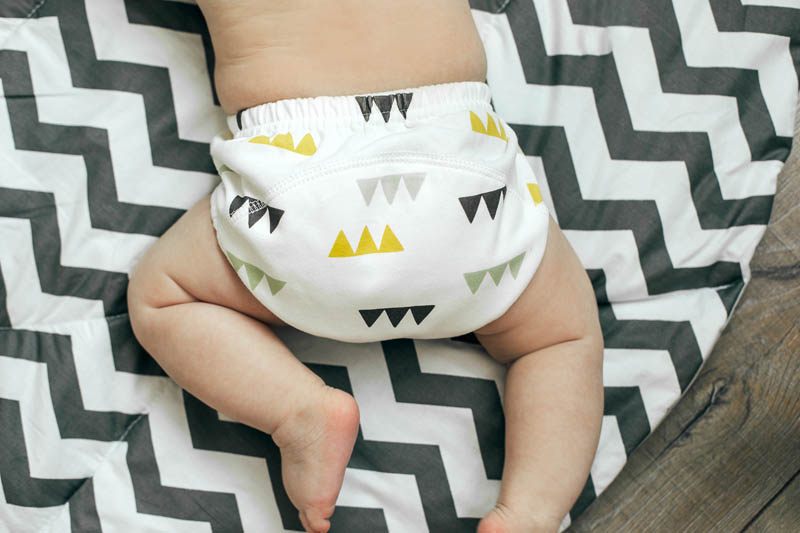Have you ever thought about what you usually do when it’s time to go to bed? We bet you don’t just take off your clothes, slide under the sheets, turn off your bedside lamp, close your eyes, and fall asleep at once. You may not realize it at all but you have a certain routine. You take a shower, brush your teeth, drink some water, read a book, watch some show, or scroll your Facebook or Instagram feed relaxing. And just like you, your little baby cannot fall asleep once you’ve put them down in their crib. There has to be a predictable and consequential bedtime routine for a good and sound sleep.

It is the sleeping routine that gives your baby a signal that it’s high time they ended up with an active play, relax, and go to bed. It is a mild transition from a dynamic and busy day to a calm and restful night and should be implemented gradually.
When Is It the Right Time to Start a Bedtime Routine?

Don’t try to establish a routine the next day you’ve arrived home from the hospital with a newborn as they don’t have the sense of night and day and won’t be able to follow the predictable rituals. However, as your infant grows up and reaches the age of around 8-10 weeks, you may start to gradually introduce them into a baby sleep routine.
At first, it has to be very short, just one-two simple actions like cuddling, feeding, and singing a short and tranquil song. Later, you can add other actions, for instance, bathing (in case it relaxes your baby, not overexcites), massage, prayer, etc.
Why Is Bedtime Routine Vital?

The bedtime routine is a very important issue as it enhances the circadian rhythms of a baby, helps them know the difference between night and day, and later assists them to slow down after busy and active play and get ready for bedtime. It may sound strange and funny but babies are very conservative. They like to know what is going to be next and don’t favor global or minor changes.
That is why a regular baby bedtime routine creates some sort of comfort and soothes the nervous system of a child which is especially helpful during sleep training or when your child is suffering from a sleep regression. Thus, a good and consistent ritual helps with the following:
1. Your baby falls asleep easily, fast, and without tears. When you follow a bedtime routine, it calms your baby and provides them with a predictable set of actions, thus, relaxing them and helping them to nod off.
2. Your baby can survive through all those constant sleep regressions and growth spurts comfortably for everyone around the house.
3. You will be able to relax and have peace of mind. Besides calming down your little one, a bedtime routine also helps you to bond with your child, spend some quiet time together, and lets you relax after you’ve put your baby to sleep.
What Is the Best Bedtime Routine for a Small Baby?

If you are looking for a universal one bedtime ritual that would fit all babies, you won’t find any. That’s because all kids are different, have different preferences, and spend the day in a different way. All you have to do is find the best things that will work for your baby, be flexible, and test. Below, we will provide you with a brief example of a bedtime ritual that has worked for many babies (you can mix, sort, or add other activities):
– Having a soothing bath. It won’t be good to include bath time into the ritual for those babies who don’t feel excited afterward. In other cases, warm water will make the baby feel more tired and relaxed. Add some herbs, such as lavender and chamomile, for a better effect;
– Reading a book. You can either sit in a rocking chair or feel comfortable in the bed together with your little one and read a ‘sleep’ book in a calm and quiet voice;
– Feeding. If your little one falls asleep during this stage, try to move it before bath time;
– Making a gentle massage. Studies show that more melatonin, the sleep hormone, is produced in babies who get a brief massage before bed;
– Singing a lullaby. It is a song that will set the stage for sleep. Sung in a soft voice, almost whispering, will comfort your baby;
– Turning on the soothing white noise when you are done with everything else. Most babies love the sounds of white noise just because when they were in the uterus, they were listening to a myriad of soothing noises like your heartbeat, gurgling stomach, breathing, etc.
– Saying some sweet words when putting your baby down and leaving the room. These words have to be the same day after day and they will be a signal for your baby that it’s time to fall asleep. You can also add a kiss or a stroke on the head or cheek.
How to Set a Working Bedtime Routine for a Baby?

Tip 1. Timing Is Important
You have to figure out how much sleep your baby gets during the day and night. To do this, you’ll have to keep notice of your infant’s sleep patterns. Look for sleep cues your baby is showing you, such as yawning, rubbing their eyes, staring at something for a longer time, etc. This indicates that your baby is already tired and sleepy, and this will help you to put them to sleep before too much cortisol is produced and the baby goes overtired and reluctant to go to bed.
When you note the longest sleep stretch at night, start with your routine 30-45 minutes before the time you usually put your baby to sleep. For instance, if the longest stretch is from 7:30 p.m. to 2 a.m., you’ll need to start the ritual at around 6:45-7:00 p.m.
Tip 2. Create the “Sleepy” Atmosphere
You won’t be able to fall asleep in a hot and light room, will you? So the right atmosphere in the bedroom is an additional signal for your baby that it’s their bedtime. Let some air into the room beforehand, dim or turn off the lights, close the curtains, and make sure the temperature is comfortable for your baby.
Tip 3. Child Has to Sleep in the Same Place ALWAYS
Sometimes babies tend to fall asleep in car seats or strollers. But it is important to put your baby to sleep in their crib or bassinet approximately at around the same time every day, as well as for short-time naps. This will not only ensure a sound and regenerating sleep but also reduce the risk of SIDS.
Tip 4. Put Your Baby to Bed When They Are Still Awake
This has to be done to ensure your baby will master the skill of falling asleep on their own, without extra help from mom, such as feeding, cuddling, tapping, stroking, rocking, etc. When you’ve noticed your little one is drowsy enough, it’s time to put them down. First, it may not work the way you expect, but with little effort and time you’ll succeed and your baby will fall asleep without your help.
Tip 5. Make Changes When Necessary
When your baby is small, the routine will include a couple of actions. But later, as soon as they grow, their needs change and you’ll have to be flexible with the ritual.
Tip 6. Be Consistent
Consistency is the way to success in establishing a soothing and working bedtime routine. When done regularly day by day, it will help your baby fall asleep faster.
All the recommendations and tips listed here are based on the information provided by a range of highly respected institutions, among which are CDC (Centers for Disease Control and Prevention) and AAP (the American Academy of Pediatrics).





